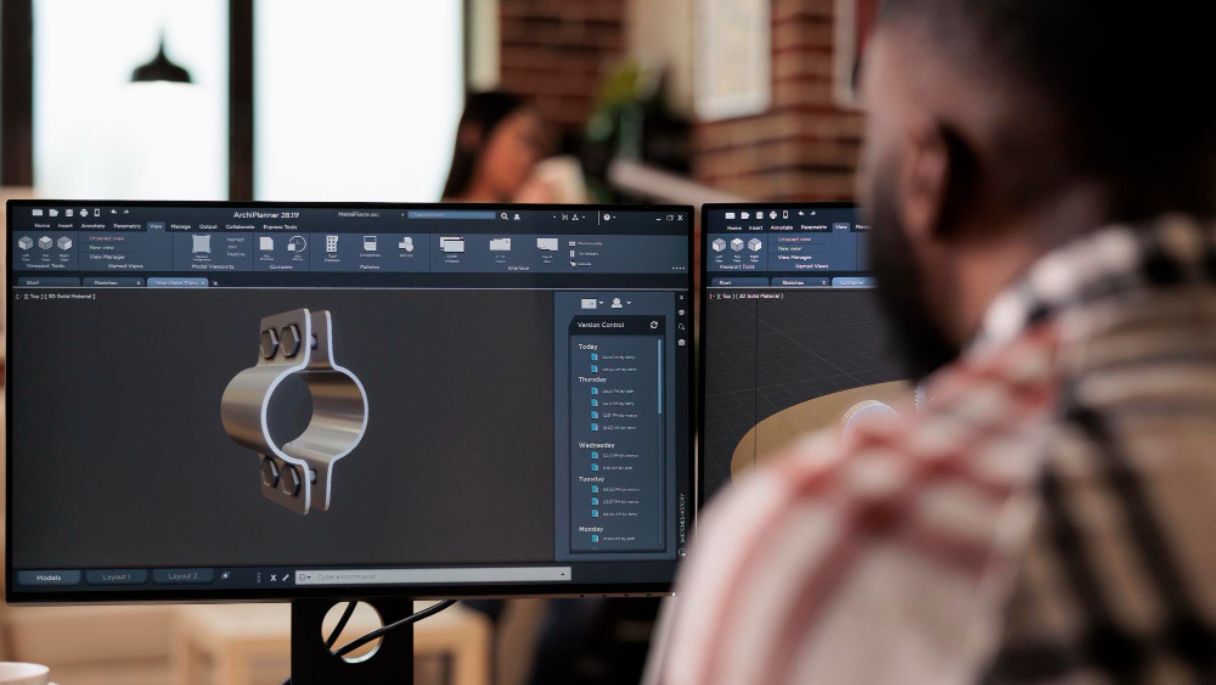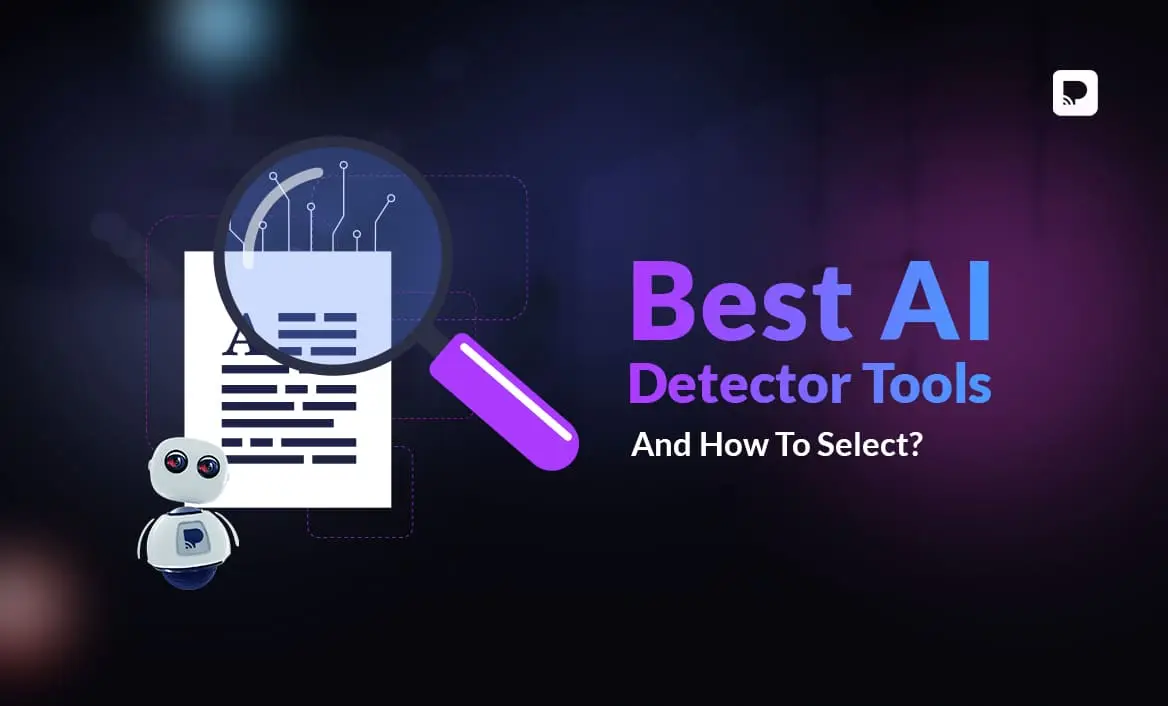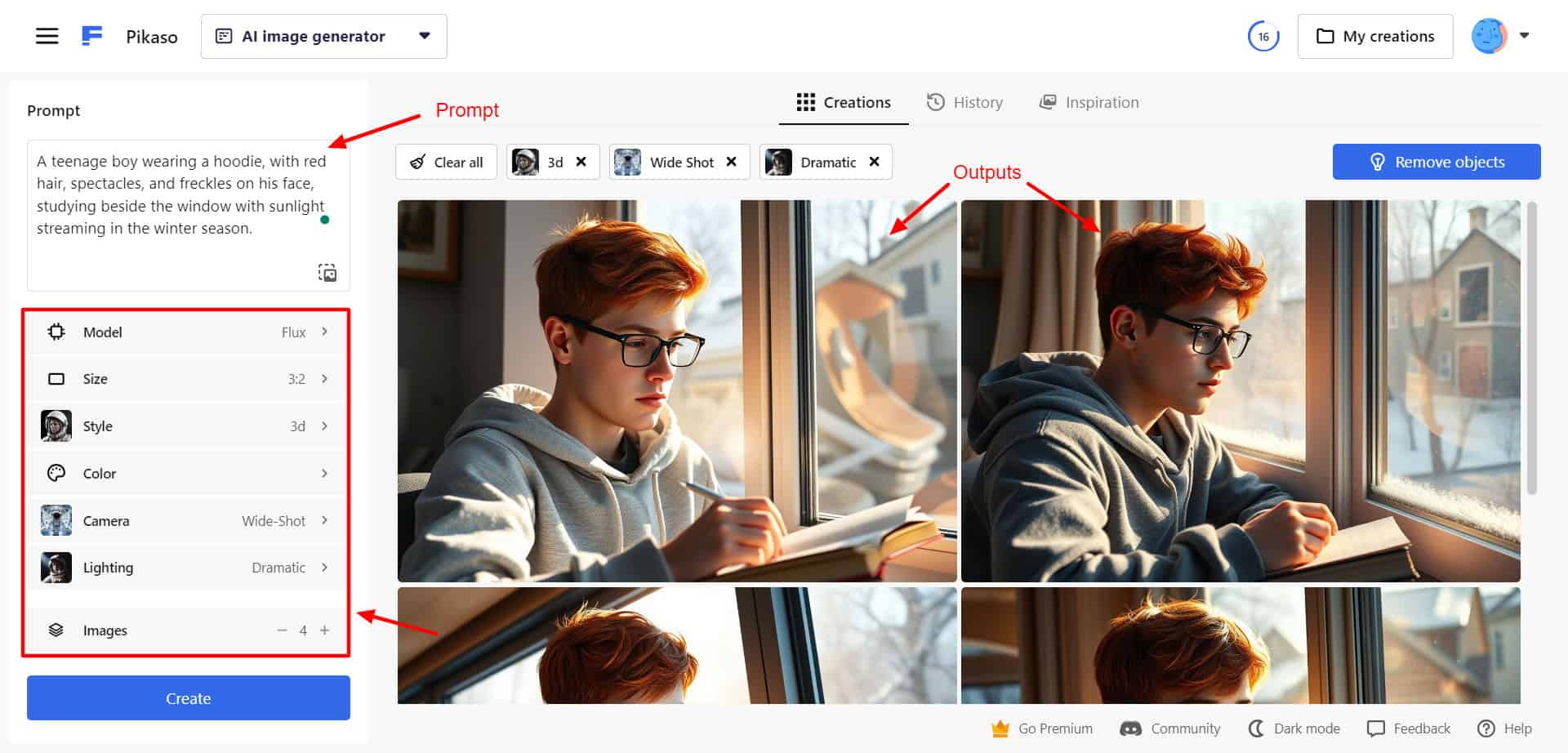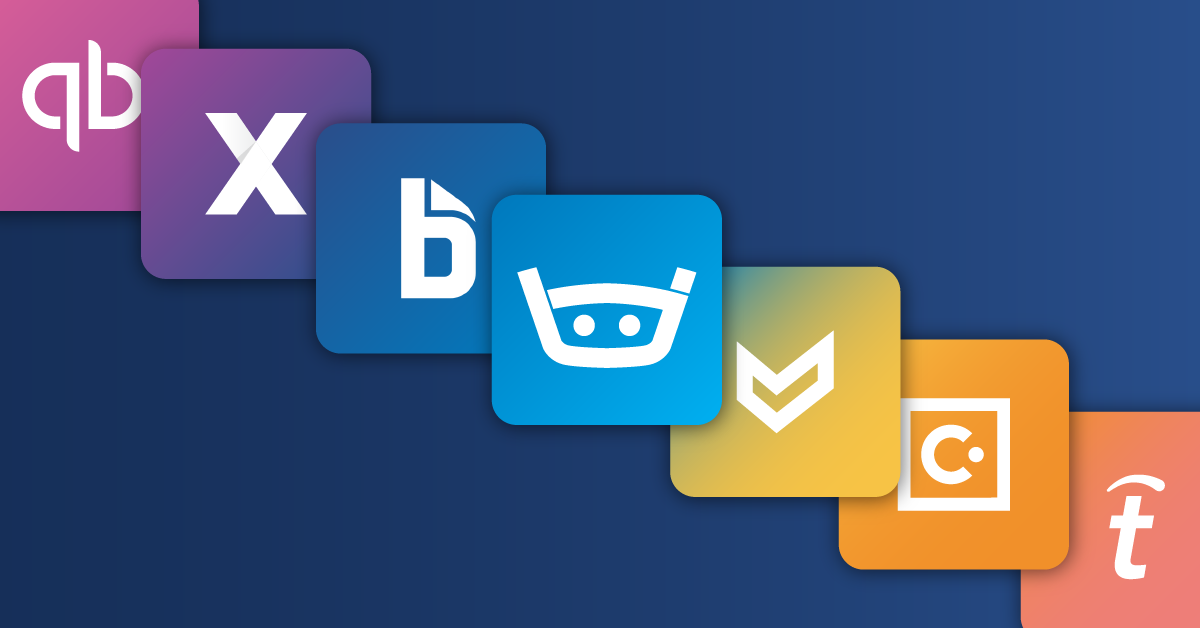24 Best 3D CAD Software in 2025: In today’s fast-paced design environment, you need a 3D CAD software solution that not only meets your creative and engineering demands but also scales with your evolving project requirements. As technology rapidly advances and competition intensifies, finding the right 3D CAD software is more essential than ever.
Whether you are a seasoned professional or just embarking on your design journey, this guide serves as your gateway to the most innovative CAD solutions in 2025. Today’s best 3D CAD software blends powerful modeling capabilities with intuitive interfaces, enabling you to transform complex ideas into striking visual designs effortlessly.
With the market thriving, valued at $10.38 billion in 2022 and projected to grow at a CAGR of 6.7% through 2030, industry leaders are continually pushing the boundaries of design innovation. In this comprehensive overview, we delve into top-tier software offerings, explore varied modeling techniques, and examine tools tailored to diverse industry needs.
Our expert recommendations, meticulous comparisons, and detailed feature analyses empower you to make informed decisions, ensuring your selected solution not only meets but exceeds project demands in today’s dynamic landscape. Discover innovative features that unlock your creative potential for greatness.
Understanding 3D CAD Software
Design professionals rely on 3D CAD (Computer-Aided Design) software to create, modify, and optimize digital models that bring innovation to life. Unlike traditional 2D drafting, 3D CAD lets you visualize products and architectural structures from every angle and test them through simulation before production.
These tools can be used to refine designs, ensure compatibility, and even simulate real-life interactions, all in one digital environment. From product design to complex industrial applications, 3D CAD software revolutionizes how engineers, architects, and designers work, enhancing productivity and creativity across many disciplines.
What is 3D CAD Software?
3D CAD software is a sophisticated digital toolkit for developing fully realized three-dimensional models of products, structures, or components. It allows users to view these models from any perspective, perform interference checks, generate technical documentation, and even simulate performance under various conditions.
This technology streamlines the design process and bolsters collaboration among product development teams across engineering, architecture, and manufacturing industries. With advanced visualization, real-time rendering, and energy-efficient design validation, 3D CAD software is indispensable in today’s competitive market.
Different Types of 3D CAD Modeling Approaches
- Parametric Modeling: Parametric modeling lets you build designs based on relationships and constraints between features. When you tweak one parameter, related features update automatically. This proves invaluable for projects that demand precision and consistency, especially in engineering applications where design intent matters.
- Direct Modeling: Direct modeling empowers you to manipulate geometry directly without worrying about historical dependencies. This method speeds up conceptual changes and is ideal when working with imported geometries from other software.
- Surface Modeling: Surface modeling focuses on crafting complex curved surfaces using mathematical representations, typically NURBS. It excels in industrial design, automotive styling, and consumer products, where aesthetics are as critical as functionality.
- Solid Modeling: Solid modeling produces geometrically complete digital representations that encompass both form and function. It is the backbone of mechanical design and manufacturing, ensuring that every product meets exact material and physical property requirements.
- Hybrid Approaches: Many modern systems blend these approaches. For instance, Autodesk integrates solid and surface modeling with parametric elements to offer maximum flexibility for various design applications.
Common Pain Points in CAD Software Usage
Despite their power, CAD systems come with challenges. A survey of 230 product development professionals revealed that users often grapple with a high cost of ownership, interoperability issues when importing/exporting files, steep learning curves, and a scarcity of skilled professionals familiar with specific platforms.
Additionally, ergonomic discomfort remains a major problem, with 97% of users reporting that specialized input devices help reduce physical strain during long work sessions. Recognizing these issues can help you choose a solution that not only meets your technical requirements but also promotes a healthy and efficient workflow.
Factors to Consider When Choosing 3D CAD Software
When deciding which 3D CAD software is right for your projects, keep the following factors in mind:
- Industry-Specific Requirements: Different industries demand specialized tools. For example, architectural firms require robust BIM capabilities, while mechanical manufacturers need precise assembly modeling and tolerance analyses.
- User Experience and Learning Curve: Evaluate the usability of each system. Some software offers a gentle introduction (like TinkerCAD), while others provide deep, feature-rich environments that require extensive training (like CATIA).
- Cost Considerations: Consider not only the initial licensing fees but also subscription costs, training investments, and potential hardware upgrades. There are viable options in every price range, from free, open-source solutions to high-end enterprise systems.
- Interoperability: Think about compatibility and file exchange. Look for software that preserves data integrity during imports/exports and supports widely-used file formats.
- Hardware Requirements: Advanced CAD software demands robust systems. Ensure your computer meets or exceeds the recommended specifications to run these tools efficiently.
- Cloud vs. Desktop Solutions: Decide if you need the flexibility of cloud-based CAD, which offers real-time collaboration from any device, or the raw power of desktop applications tailored for complex model handling.
Top 24 Best 3D CAD Software in 2025
In 2025, the Top 24 Best 3D CAD Software redefines design innovation through advanced modeling, intuitive interfaces, and seamless collaboration. Featuring industry leaders like Fusion 360, SOLIDWORKS, and AutoCAD, these platforms empower professionals with tools for drafting, realistic rendering, and remarkably efficient project management across architecture, engineering, and product design.
1. Fusion 360
Fusion 360 is Autodesk’s cloud-connected CAD/CAM platform that blends industrial and mechanical design, simulation, and collaboration in one unified solution. You gain a hybrid approach that integrates both mesh and solid modeling techniques, and its cloud-based collaboration features make designing with distributed teams seamless.
Whether you’re refining a product’s form or preparing it for rapid prototyping, Fusion 360’s intuitive interface and robust functionality cater to both innovative startups and experienced engineers alike.
Key Features:
- Integrated CAD, CAM, PCB design, and simulation tools
- Parametric modeling alongside direct editing capabilities
- Cloud-based file management with version control
- Generative design technology for optimized result suggestions
- Advanced support for manufacturing processes such as CNC and additive manufacturing
Pros:
- Cost-effective compared to traditional enterprise solutions
- Regular cloud updates that introduce new features
- Excellent for remote collaboration on distributed teams
Cons:
- Heavily reliant on internet connectivity for full functionality
- Performance may suffer with slower network speeds
- The subscription model removes perpetual licensing options
2. SketchUp
SketchUp stands out as an accessible and intuitive 3D modeling tool primarily used in architecture, interior design, and landscaping. Its straightforward interface simplifies the design process without sacrificing power.
Perfect for those who need a speedy and flexible solution, SketchUp allows you to create detailed models quickly. With an extensive library of user-generated models and a suite of plugins, this software makes your workflow both efficient and creative as you visualize and share your ideas.
Key Features:
- User-friendly interface with a minimal learning curve
- Extensive 3D Warehouse for community-contributed models
- Versatile modeling tools for both simple and complex designs
- Dynamic push-pull functionality for easy volume creation
- Robust compatibility with various file formats and plugins
Pros:
- Highly intuitive design ideal for beginners and professionals alike
- Lively community and extensive resource library
- Fast rendering and model-sharing capabilities
Cons:
- Limited advanced modeling features compared to high-end systems
- It may require plugins to extend functionality for specialized industries
- Performance can be affected by complex models in lower-end systems
3. SOLIDWORKS
SOLIDWORKS is an industry-standard parametric solid modeling software developed by Dassault Systèmes. It provides you with world-class tools for 3D engineering design, simulation, and product data management.
With its precision-focused approach and robust feature set, SOLIDWORKS has become the benchmark for mechanical design in manufacturing industries.
Its intuitive interface and detailed assembly management capabilities ensure that complex projects can be brought to life while streamlining collaboration and production workflows.
Key Features:
- Parametric solid modeling with a feature-based history
- Advanced assembly management for intricate designs
- Comprehensive simulation tools for structural and thermal analysis
- Specialized sheet metal design with automatic flat pattern creation
- Photorealistic rendering and animation toolsets
Pros:
- Widely adopted, ensuring a rich community and plentiful learning resources
- Strong integration with manufacturing processes
- Detailed technical documentation and extensive support network
Cons:
- High cost of ownership compared to many alternatives
- Limited to Windows platform
- Requires powerful hardware for optimal performance
4. AutoCAD
AutoCAD has long been a stalwart in the CAD industry, evolving from a 2D drafting tool into a versatile 3D modeling platform. Known for its robust technical documentation features, AutoCAD offers you comprehensive tools for precision drawing, annotation, and complex model creation.
Its balanced approach between traditional drafting and modern 3D modeling makes it an enduring choice among architects, engineers, and construction professionals who depend on accuracy and compatibility across diverse projects.
Key Features:
- Extensive 2D drafting tools with precise dimensioning and annotation
- Versatile 3D modeling with solid, surface, and mesh capabilities
- Specialized toolsets for architecture, mechanical, and electrical design
- Customizable interface supported by LISP programming for automation
- Cloud integration for mobile accessibility and file management
Pros:
- Industry standard with widespread recognition
- Ample learning resources and strong community support
- Excellent for detailed technical documentation
Cons:
- Considered expensive for small teams and startups
- Less optimized for dedicated 3D modeling tasks
- Requires robust hardware due to high resource demands
5. Creo
Creo, formerly known as Pro/ENGINEER, is PTC’s comprehensive 3D CAD solution built for advanced product development. It equips you with powerful parametric modeling tools for complex assemblies and mechanical designs.
Creo’s integrated suite facilitates seamless transitions from conceptual design through detailed engineering. Its combination of robust simulation capabilities and flexible modeling approaches makes it ideal for industries where precision and reliability are non-negotiable, especially in high-stakes mechanical engineering projects.
Key Features:
- Advanced parametric modeling with controlled design intent
- Comprehensive assembly management for large products
- Integrated simulation and multi-physics analysis
- Advanced surface modeling functionalities
- Direct modeling capability for rapid design iterations
Pros:
- Exceptional performance in complex mechanical designs
- Strong simulation tools that enhance product reliability
- Scales well to accommodate enterprise-level projects
Cons:
- The steep learning curve, particularly for new users
- Higher pricing relative to mid-range CAD solutions
- Demands robust hardware, which can increase setup costs
6. Autodesk Inventor
Autodesk Inventor is a professional-grade 3D mechanical design and simulation tool tailored for product manufacturing. It empowers you to develop detailed 3D models and assemblies with robust parametric design workflows and integrated analysis.
Inventor’s specialized environments for sheet metal, tubing, and plastic parts ensure that your manufacturing designs are precise and production-ready from day one. Its seamless integration with other Autodesk products provides a unified ecosystem to support your entire product development lifecycle.
Key Features:
- Parametric modeling with built-in shape optimization tools
- Advanced assembly management for large-scale complex designs
- Automated design tools for common mechanical components
- Robust sheet metal design with flat pattern capabilities
- Integrated stress and motion simulation modules
Pros:
- Deep integration with the Autodesk ecosystem
- Comprehensive tools for manufacturing-oriented design
- Excellent documentation and drawing generation features
Cons:
- Only available on Windows platforms
- Requires significant training due to complexity
- The subscription model may be costly for smaller organizations
7. TinkerCAD
TinkerCAD serves as an excellent entry point into the world of 3D modeling, especially if you are new to CAD. Developed by Autodesk, this browser-based tool uses a building-block approach to simplify the design process.
Its intuitive interface allows you to piece together models from basic shapes, making it ideal for educational purposes, 3D printing enthusiasts, and hobbyists. TinkerCAD’s ease of use and immediate accessibility mean you can quickly grasp the fundamentals without any prior experience or installation requirements.
Key Features:
- Web-based interface with no installation required
- Intuitive drag-and-drop design using basic shapes
- Direct integration with popular 3D printing services
- Simple electronics design tools for creating circuits
- Classroom management tools for educational users
Pros:
- Completely free with accessible design tools
- Extremely low learning curve for beginners
- Works on any device with a modern web browser
Cons:
- Limited advanced features for professional-grade work
- Not suited for precision or high-complexity designs
- Always requires an active internet connection
8. FreeCAD
FreeCAD provides an impressive open-source alternative for 3D modeling. Its focus on parametric design makes it ideal for mechanical engineers and product designers. Its modular architecture allows you to customize the interface according to your project needs.
With support for Python scripting, FreeCAD offers limitless extensibility and automation potential to tackle varied design challenges. Whether you’re working on architectural modeling or complex machinery, FreeCAD’s dedicated workbenches expand its capabilities across diverse applications, making it a versatile choice for those who value customization and cost efficiency.
Key Features:
- Fully parametric modeling with a comprehensive feature history
- Modular workbenches for architecture, robotics, and more
- Python scripting integration for advanced customization
- Finite Element Analysis (FEA) for stress and structural analysis
- Cross-platform compatibility (Windows, Mac, Linux)
Pros:
- Free and open-source, cutting licensing costs
- Large and active community support
- Regular updates and community-driven improvements
Cons:
- The learning curve can be steeper than some commercial software
- Interface variations across workbenches may confuse new users
- Occasional stability issues with very complex designs
9. Onshape
Onshape is the first full-cloud 3D CAD system, perfect for teams that demand modern collaboration. Running entirely in your web browser, it allows you to work on designs in real-time with colleagues from anywhere.
Its architecture eliminates tedious file management and version conflicts by automatically tracking design history. Onshape’s integrated parametric modeling and mobile accessibility ensure that you enjoy flexible, continuous productivity without being tied to traditional desktop hardware.
Key Features:
- Complete cloud-based architecture with browser accessibility
- Real-time multi-user collaboration and version control
- Feature-rich parametric design tools
- Mobile apps for on-the-go design reviews
- Extensive API support for custom integrations
Pros:
- Accessible from any internet-enabled device
- Ideal for remote collaboration and distributed teams
- Automatically updated without manual installs
Cons:
- Requires a consistent and fast internet connection
- Subscription pricing can be steep long-term
- Limited feature depth compared to mature desktop systems
10. Blender
Blender is a powerhouse of creativity that transcends its traditional role as an animation tool to serve as a robust 3D modeling platform. While widely celebrated among digital artists and animators, Blender’s growing suite of precision modeling add-ons makes it valuable for conceptual design and product visualization.
Blender’s extensive toolset and impressive rendering capabilities enable photorealistic visuals alongside innovative simulation features, all without licensing fees. It challenges conventional CAD systems by merging artistic creativity with technical precision.
Key Features:
- Comprehensive mesh and polygon modeling tools
- Advanced rendering engine for photorealistic visualization
- Integrated animation and rigging for dynamic presentations
- Physics-based simulation for realistic motion studies
- Extensive add-on ecosystem for CAD-specific enhancements
Pros:
- Free and open-source with no licensing fees
- A versatile toolset that spans creative to technical needs
- Active user community driving continuous innovation
Cons:
- Steep learning curve due to nontraditional interface
- Requires add-ons for full parametric functionality
- Not the best fit for highly precise manufacturing documentation
11. BricsCAD
BricsCAD is a versatile CAD solution for 2D drafting and advanced 3D modeling. With a familiar interface and a powerful suite of tools, it provides an accessible alternative for professionals transitioning from legacy CAD systems.
BricsCAD’s unique “Block-Based” design approach ensures that you rapidly develop complex assemblies and designs without sacrificing efficiency. It integrates seamlessly across various file formats, making collaboration and interoperability with other CAD systems a smooth experience.
Key Features:
- Supports both traditional 2D drafting and 3D modeling
- Familiar interface with customizable tool palettes
- AI-assisted design tools for optimizing workflows
- Extensive file format compatibility, including DWG and DXF
- Integrated direct and parametric modeling capabilities
Pros:
- Cost-effective alternative with a familiar CAD environment
- Flexible licensing options, including perpetual licenses
- Supports rapid conversion of legacy designs
Cons:
- Fewer advanced features than some premium CAD systems
- Occasional performance lags with extremely complex models
- Limited dedicated simulation and analysis tools
12. CATIA
CATIA is the pinnacle of enterprise-level 3D CAD software, delivering unmatched capabilities for intricate product design and manufacturing processes. Developed by Dassault Systèmes, it is built for highly complex industries such as aerospace and automotive.
CATIA’s comprehensive toolset allows you to create stunningly precise surface models and manage massive assemblies while integrating with broader systems engineering processes. Its robust digital product lifecycle management makes it an essential tool for innovation where design perfection is critical.
Key Features:
- Advanced Class-A surfacing for precision design
- Integrated systems engineering tools for end-to-end design
- Robust assembly management for extremely large products
- Digital mockup and validation tools for product testing
- Tailor-made industry-specific modules for aerospace, automotive, and shipbuilding
Pros:
- Unparalleled power for complex design challenges
- Dominant presence in high-end manufacturing sectors
- Complete digital product definition and validation environment
Cons:
- Very high cost of ownership and implementation
- Steep learning curve requiring specialized training
- Resource-intensive with requirements for high-end hardware
13. Siemens NX
Siemens NX, formerly known as Unigraphics, is a cutting-edge solution that combines advanced design, simulation, and manufacturing capabilities under one roof. Tailored for high-performance environments, NX empowers you to design, validate, and fabricate even the most complex products with ease.
Its synchronous technology enables rapid edits and flexible design processes, which is particularly advantageous for industries like automotive and aerospace, where precision and large assemblies are the norm.
Key Features:
- Advanced parametric and synchronous modeling
- Comprehensive tools for complex assembly management
- Integrated CAE for thermal, structural, and motion analysis
- Manufacturing validation tools, including MBD and sheet metal design
- Seamless integration of CAM processes for toolpath generation
Pros:
- Exceptional capability in handling massive, intricate assemblies
- Flexible design workflows with synchronous technology
- Complete integration between design and manufacturing processes
Cons:
- High cost and significant training requirements
- Requires substantial hardware resources for optimal performance
- Complex administration and deployment challenges
14. OpenSCAD
OpenSCAD is a unique, script-based 3D CAD modeler that caters to users who prefer a programming approach to design. Instead of interactive painting or dragging shapes, you write code to generate models, making it perfect for precise, repeatable designs.
This tool is ideal for engineers and technical designers who thrive on control and reproducibility over an automated visual interface. OpenSCAD empowers you to craft precise, solid models and iterate your designs quickly through scripting, offering complete design freedom without built-in trial-error loops.
Key Features:
- Script-based CAD enabling full parametric control
- Precise geometry creation through programming
- Open-source with a highly active user community
- Cross-platform support for Windows, Mac, and Linux
- Supports exporting designs in various formats, including STL for 3D printing
Pros:
- Complete control through code-based design
- Free, open-source, and lightweight with minimal hardware demands
- Ideal for reproducible, mathematically precise designs
Cons:
- The steep learning curve for users unfamiliar with programming
- Lacks a traditional interactive modeling interface
- Limited direct visualization tools compared to GUI-based systems
15. Autodesk Revit
Autodesk Revit is a powerhouse for Building Information Modeling (BIM) that transcends traditional 3D CAD functions to provide a collaborative design environment for architecture, engineering, and construction.
Designed to maintain building intelligence, it lets you create intelligent, parameter-driven components that automatically update across all views.
Revit streamlines project delivery while integrating multidisciplinary inputs, ensuring you and your team never miss a detail in complex construction projects and facility management tasks.
Key Features:
- Comprehensive BIM and parametric modeling
- Automatic coordination and updating of building components
- Integrated tools for energy analysis, structural simulation, and MEP coordination
- Extensive library of smart components and families
- Cloud collaboration and real-time multi-user editing
Pros:
- Streamlines architecture and construction documentation
- Enhances collaboration through integrated BIM workflows
- Robust simulation tools for sustainable design practices
Cons:
- High upfront costs and training investment
- Requires robust hardware for large-scale projects
- Less flexible for non-building design projects
16. Shapr3D
Shapr3D is a modern CAD solution designed specifically for the iPad and touch-enabled devices. It provides an intuitive and fluid modeling experience. Its direct modeling approach allows you to create and modify 3D objects in real-time using an innovative touch interface combined with Apple Pencil support.
Shapr3D is ideal for rapid prototyping and concept development. It lets you sketch, design, and refine ideas on the go without the need for a traditional desktop setup.
Key Features:
- Touch-optimized interface with Apple Pencil integration
- Real-time direct modeling for rapid design iterations
- Intuitive gesture-based controls for seamless editing
- Supports exporting to standard CAD formats for downstream use
- Cloud synchronization for work across devices
Pros:
- Highly accessible mobile solution for on-the-go designers
- Extremely intuitive for beginners and professionals alike
- Rapid concept iteration with a direct modeling workflow
Cons:
- Limited advanced simulation features compared to desktop systems
- Primarily optimized for iOS, with limited desktop integration
- May struggle with very complex assemblies due to mobile hardware constraints
17. Solid Edge
Solid Edge from Siemens is a comprehensive 3D CAD software solution that combines the ease of use of direct modeling with the control of parametric design. It equips you to create detailed models, manage assemblies, and analyze designs efficiently in one integrated package.
Solid Edge’s synchronous technology seamlessly merges design spontaneity with precision engineering, helping you accelerate product development cycles while reducing time to market.
Key Features:
- Combines direct and parametric modeling through synchronous technology
- Robust tools for managing complex assemblies
- Integrated simulation and stress analysis modules
- Comprehensive sheet metal and wiring harness design capabilities
- User-friendly interface with extensive customization options
Pros:
- Flexible design approach blending ease-of-use with precision
- Rapid learning curve thanks to an intuitive interface
- Excellent integration with manufacturing and simulation tools
Cons:
- It may require additional modules for advanced simulation
- It is not as widely adopted as some legacy CAD systems
- Higher upgrade costs for enterprise-level features
18. 3ds Max
Autodesk’s 3ds Max is renowned for its capabilities in high-end 3D modeling and rendering. It is primarily used in motion graphics, games, and visual effects. However, its robust modeling tools and extensive plugin ecosystem have also found applications in architectural visualization and product design.
Focusing on photorealistic rendering and advanced material creation, 3ds Max enables you to produce visually stunning presentations and detailed models that can inform both creative and technical projects.
Key Features:
- Advanced polygonal modeling and mesh editing tools
- Photorealistic rendering engine with extensive material libraries
- Animation and rigging tools for dynamic presentations
- Support for high-resolution textures and lighting effects
- Extensive third-party plugin support for extended functionality
Pros:
- Exceptional visualization and rendering quality
- Versatile toolset for both creative and technical projects
- Well-established in the entertainment and design industries
Cons:
- Steeper learning curve for purely engineering applications
- Requires powerful hardware for high-quality rendering
- Not optimized for parametric or precision engineering design
19. MicroStation
MicroStation by Bentley Systems is a robust CAD platform known for its exceptional accuracy in both 2D drafting and 3D modeling. It delivers a comprehensive toolset tailored for infrastructure, architecture, and civil engineering projects.
MicroStation’s environment facilitates precise design and documentation with advanced visualization capabilities. It allows you to integrate geospatial data and manage large-scale projects efficiently. Its interoperability and high standards for technical precision make it a preferred choice for large enterprises.
Key Features:
- Advanced 2D drafting combined with sophisticated 3D modeling
- Excellent integration with geospatial and infrastructure data
- Customizable interface and automation tools
- High-precision tools for civil and structural engineering
- Compatibility with a wide range of file formats
Pros:
- Industry-proven reliability and precision
- Extensive tools for large-scale and infrastructure projects
- Strong interoperability with other engineering software
Cons:
- High licensing and training costs
- It can be cumbersome for smaller, less complex projects
- Less user-friendly for newcomers compared to other CAD tools
20. Rhinoceros 3D
Rhinoceros 3D, commonly known as Rhino, specializes in freeform surface modeling and is ideal for creating complex, mathematically precise curves and surfaces. Using NURBS, Rhino allows you to build intricate models with intense detail and flexibility.
Its complementary tool, Grasshopper, further extends its capabilities into algorithmic design. Rhino remains a favorite among industrial designers, architects, and jewelry designers who need to work with complex shapes in a cost-effective and versatile environment.
Key Features:
- Precise NURBS-based surface and curve modeling
- Unlimited precision with support for large model sizes
- Grasshopper integration for visual, parametric design
- Extensive file compatibility for smooth data exchange
- Advanced SubD modeling tools for organic shapes
Pros:
- Unmatched surface modeling capabilities
- Affordable with a one-time purchase option
- Flexible enough for a range of creative and technical applications
Cons:
- Not parametric by default requires additional plugins
- Fewer built-in simulation tools compared to dedicated MCAD software
- The learning curve can be steep for precision engineering
21. Autodesk Maya
Autodesk Maya is a leading 3D animation and modeling software primarily used in film, gaming, and visual effects, but it also has significant potential in product visualization and simulation. Maya’s powerful suite of tools lets you create highly detailed, lifelike models and renders.
Although its interface is optimized for complex animations, its robust modeling and texturing capabilities mean you can leverage it for creative product design and conceptual visualization, giving your projects a cinematic quality.
Key Features:
- Advanced modeling with polygon, NURBS, and subdivision surfaces
- State-of-the-art animation and rigging tools
- Photorealistic rendering engines with extensive material libraries
- Integrated dynamics and particle systems for simulation
- Comprehensive toolset for texturing and visual effects
Pros:
- Industry standard for high-quality visualization
- Highly versatile for both animation and detailed modeling work
- Constantly updated with cutting-edge features
Cons:
- The steep learning curve for users new to 3D animation
- Requires high-performance hardware for smooth operation
- Licensing costs can be prohibitive for smaller studios
22. CAD Exchanger
CAD Exchanger provides you with powerful translation and interoperability tools that bridge the gap between disparate CAD systems. It allows seamless import, conversion, and export across dozens of file formats, making it indispensable for teams facing frequent compatibility issues.
Designed to integrate into your existing workflows, CAD Exchanger enhances collaboration by ensuring that your technical data remains intact regardless of the software used. This saves time and reduces errors in cross-platform projects.
Key Features:
- Converts a wide range of CAD file formats efficiently
- Supports both 2D and 3D data translations
- Intuitive interface for rapid, error-free conversions
- Integration with major CAD platforms for streamlined workflows
- Batch processing capabilities for large projects
Pros:
- Significantly reduces interoperability challenges
- User-friendly with a focus on automation and accuracy
- Robust support for industry-standard file formats
Cons:
- Features focused solely on file translation (not full CAD)
- It can be complex to configure for unique workflows
- Requires periodic updates to support new file formats
23. KeyCreator
KeyCreator is a flexible, non-parametric CAD solution that gives you direct control over geometry creation and modification. It is especially valued in industries requiring rapid design iterations and detailed reverse-engineering capabilities.
With its intuitive interface and powerful modeling tools, KeyCreator enables you to efficiently produce high-quality models without being tied to the constraints of history-based modeling. This makes it ideal for customization and fast-paced product changes.
Key Features:
- Direct modeling without dependency on history-tree constraints
- Comprehensive tools for reverse engineering and surface editing
- Flexible compatibility with multiple CAD formats
- Intuitive customization options for enhanced workflow efficiency
- Robust visualization and rendering tools for realistic outputs
Pros:
- Fast and flexible modification of complex geometries
- Ideal for industries reliant on reverse engineering
- Simplifies design iterations without heavy reliance on parametric
Cons:
- Fewer parametric capabilities compared to traditional systems
- Limited simulation tools built-in
- It may require additional modules for advanced manufacturing analysis
24. TurboCAD
TurboCAD is a versatile CAD solution valued by professionals and hobbyists alike. It offers robust tools for 2D drafting and 3D modeling. Its balanced feature set makes it suitable for a wide range of applications, from home design to detailed mechanical modeling.
TurboCAD’s affordable pricing and flexible licensing options ensure that you can scale your design solutions without significant cost burdens, allowing you to focus on creativity and functionality equally.
Key Features:
- Complete suite for both 2D drafting and 3D modeling
- Intuitive toolsets for architectural, mechanical, and industrial design
- Extensive rendering and visualization options
- Support for various file formats and third-party plugins
- A customizable user interface to match different workflow needs
Pros:
- Budget-friendly pricing with robust capabilities
- Versatile toolset suitable for a range of design projects
- Active user community and extensive resource library
Cons:
- Less advanced simulation and analysis compared to enterprise systems
- It may require additional plugins for specialized industry applications
- The user interface can feel dated relative to newer platforms
Industry-Specific 3D CAD Applications
Architecture and Construction CAD
For professionals in architecture and construction, tools that do more than create models are needed. They must support Building Information Modeling (BIM) for multidisciplinary collaboration. Software such as Autodesk Revit ensures that every building component is treated as an intelligent, interconnected element rather than a mere geometric shape.
As you plan projects, these systems synchronize changes automatically across all documentation and construction views. They integrate energy analysis, structural simulation, and construction sequencing to help you validate designs before construction begins, ultimately enhancing efficiency and coordination throughout the building lifecycle.
Manufacturing and Product Design CAD
Precision is paramount in manufacturing and product design. You require CAD solutions that offer robust assembly validation, detailed tolerance analysis, and seamless integration with production systems. Leading software like SOLIDWORKS and Siemens NX deliver specialized tools for sheet metal design, plastic components, and complex machined assemblies.
The integration with CAM systems means that as soon as you finalize your design, you can swiftly generate toolpaths for CNC machining or 3D printing, reducing costly revisions and streamlining the manufacturing process.
Electrical and Electronic Design CAD
When your projects involve electrical and electronic components, standard CAD methods evolve into highly specialized processes. Tools in this domain focus on schematic creation, PCB layout, and cable routing with rigorous electrical rules checking.
Integrations between ECAD and MCAD systems ensure that mechanical and thermal considerations are maintained when designing electronic enclosures or compact devices, thereby bridging the gap between physical components and circuit design.
Overcoming Common 3D CAD Challenges
- Managing the Learning Curve: The steep learning curve associated with professional CAD software can slow your progress. To overcome this, start with discipline-specific tutorials rather than generic training. Focus on key workflows before exploring advanced features, and engage with community forums that offer hands-on insights from experienced users. Standardized training programs can also mitigate issues and help you integrate new tools seamlessly into your workflow.
- Dealing with Interoperability Issues: You may encounter challenges when exchanging files between different CAD systems. As surveys have shown, file conversion issues rank high among user complaints. To counter this, industry-standard neutral formats like STEP or JT should be adopted, and specialized tools like CAD Exchanger should be considered to ensure data integrity across platforms.
- Optimizing Hardware and Performance: High-performance CAD software demands top-notch hardware. Ensure that your system boasts a high-speed single-thread CPU, ample RAM (at least 16GB), a professional-grade GPU, and SSD storage. Adjust model display settings and use level-of-detail techniques to keep your work smooth and responsive.
- Preventing Ergonomic Issues: Extended design sessions can lead to strain injuries. Combat these issues by setting up proper ergonomic workstations: use specialized 3D mice, invest in adjustable desks, take regular breaks, and ensure your monitor and lighting reduce eye strain. Studies show that ergonomic interventions significantly improve long-term productivity and comfort.
Future Trends in 3D CAD Technology
- Cloud-Based and Collaborative CAD: The future of CAD is moving toward full-cloud solutions. Tools like Onshape demonstrate how browser-based, real-time collaboration can eliminate file management issues and reduce reliance on heavy hardware. Cloud CAD lets you work from anywhere, streamlining updates and ensuring that your team always uses the latest software version.
- AI and Generative Design: Emerging AI capabilities are transforming 3D CAD by introducing generative design. In this paradigm, you input design objectives and constraints while AI algorithms generate multiple optimized variants, dramatically shortening design cycles. As computing power grows and algorithms improve, expect generative design tools to become standard in your toolkit.
- Integration of Virtual and Augmented Reality: VR and AR integration in CAD workflows gives you the ability to visualize projects at a true scale and interact with designs in immersive environments. This not only aids in design validation but also enhances client presentations and collaboration. As VR/AR hardware becomes more accessible, you’ll see these technologies making regular appearances in your design process.
Conclusion
Navigating through the ever-evolving realm of 3D CAD software in 2025, this guide has provided a comprehensive analysis of the top 24 solutions transforming design and engineering workflows. We have explored industry titans such as Fusion 360, SOLIDWORKS, and AutoCAD alongside specialized platforms like Blender, Revit, and Shapr3D.
The insights shared here empower you to choose a solution that perfectly aligns with your professional needs by examining various modeling approaches and addressing common challenges. Whether you are creating complex mechanical assemblies, devising architectural masterpieces, or venturing into digital artistry, the right 3D CAD software can drive your productivity and creativity to new heights.
Embracing emerging trends like cloud collaboration and generative design, along with investing in ergonomic work practices, helps future-proof your work environment. With the skills and tools presented in this guide, you are now equipped to transform innovative ideas into tangible solutions.
As you continue to adapt to this competitive landscape, remember that selecting versatile and powerful 3D CAD software is key to staying ahead. Embrace the future confidently, and let your creative vision flourish with the top-notch tools available in 2025. May continual innovation and precise execution guide every project you undertake, ensuring unrivaled success always.
If you found this guide valuable, please share your thoughts in the comments below and subscribe to our newsletter for the latest trends and insights in 3D CAD software. We invite you to join our community of design innovators and stay updated on new releases, tutorials, and expert advice that can take your projects to the next level.
Frequently Asked Questions
What is 3D CAD Software, and how does it benefit design projects?
3D CAD Software is a pivotal tool utilized by designers, engineers, and architects to create, modify, and optimize three-dimensional digital models. It offers detailed visualization, simulation, and testing capabilities that allow you to refine designs before production efficiently.
With precise modeling and robust simulation tools, this software enhances innovation, collaboration, and efficiency across various design projects. Ultimately, 3D CAD Software streamlines workflows, reduces errors, and empowers teams to achieve professional-grade designs in every phase effectively.
What are the key features to look for in the best 3D CAD Software?
When evaluating the best 3D CAD Software, focus on essential features that boost productivity. Look for intuitive user interfaces, parametric and direct modeling capabilities, and robust simulation tools. Advanced features may include rendering, animation, and integrated CAM support.
Cloud-based collaboration, version control, and file interoperability are important for team projects. By choosing 3D CAD Software with a comprehensive toolset, you gain the flexibility to handle intricate designs and meet industry-specific requirements, ensuring efficient design outcomes.
How user-friendly are the best 3D CAD Software solutions for beginners?
Many of the best 3D CAD Software solutions are designed with user-friendliness in mind, catering to both beginners and experienced professionals. Interactive tutorials, streamlined toolsets, and customizable workspaces simplify complex design tasks, significantly reducing the learning curve.
Whether you choose a desktop or cloud-based version, 3D CAD Software like TinkerCAD or Fusion 360 prioritizes accessibility while still offering advanced capabilities. Such design tools enable you to build skills quickly and embark on your design journey.
How do the best 3D CAD Software solutions integrate with other design tools?
Effective integration is a key strength of the best 3D CAD Software. Such software supports interoperability with complementary applications, including simulation, CAM, and rendering tools. This integration streamlines workflows by allowing you to import, export, and modify data seamlessly between systems.
With features like cloud-based collaboration, version control, and standardized file formats, 3D CAD Software ensures that your design data remains consistent across platforms, thereby reducing errors and enhancing overall productivity in your integrated design environment.
Which industries benefit the most from using 3D CAD Software?
A wide range of industries benefit from the advanced capabilities of 3D CAD Software. Sectors such as automotive, aerospace, architecture, and product design leverage its features for precise modeling, simulation, and visualization.
This software helps businesses streamline development processes, reduce prototyping costs, and enhance product quality. In addition, industries like electronics and manufacturing integrate 3D CAD Software for improved assembly management, design validation, and improved interoperability with other digital tools, ensuring efficient and scalable design workflows.
Is investing in the best 3D CAD Software worth the cost?
Investing in the best 3D CAD Software is generally worth the cost, considering the long-term benefits. This software improves design accuracy, speeds prototyping, and enhances collaboration.
With advanced simulation and rendering features, you gain insights that reduce errors and cut production expenses. The initial investment is often offset by increased productivity and reduced rework, making 3D CAD Software a smart choice for businesses of all sizes. It ultimately delivers significant cost savings and efficiency gains.
How do cloud-based 3D CAD Software solutions compare to desktop versions?
Cloud-based 3D CAD Software solutions offer significant advantages over traditional desktop versions. They provide real-time collaboration, automatic updates, and the flexibility to access your projects from any device with an internet connection.
This eliminates the need for high-end hardware and simplifies file management. While desktop versions may deliver more power for complex designs, cloud-based options are ideal for teams seeking mobility and seamless collaborative features without compromising on the essential capabilities of 3D CAD Software.
What are the common challenges when using 3D CAD Software, and how can I overcome them?
While 3D CAD Software offers powerful design capabilities, users often face challenges such as steep learning curves, interoperability issues, and high hardware requirements. These obstacles can disrupt workflows and delay projects.
To overcome them, invest in targeted training, leverage online tutorials and community forums, and opt for cloud-based alternatives when appropriate. Additionally, setting up ergonomic workstations helps reduce strain during design sessions, allowing you to maximize the potential of your 3D CAD Software and boost productivity.
How can 3D CAD Software improve collaboration in design projects?
3D CAD Software significantly enhances collaboration by providing unified platforms that enable real-time data sharing and concurrent design modifications. Teams can work simultaneously on projects, make immediate updates, and access design files from any location through cloud-based solutions.
This integrated approach streamlines communication between design, engineering, and manufacturing departments, ensuring that changes are reflected instantly. By facilitating smoother collaboration, 3D CAD Software minimizes errors and accelerates project timelines, driving innovation and efficiency in your workflow.
What future trends can be expected in the evolution of 3D CAD Software?
Emerging technologies and industry demands will drive the evolution of 3D CAD Software. Future trends include the proliferation of cloud-based platforms with enhanced collaboration, deeper integration of artificial intelligence with generative design, and immersive virtual and augmented reality experiences.
These innovations promise to streamline design processes, improve simulation accuracy, and enable more efficient workflows. As these trends develop, 3D CAD Software will continue empowering professionals to push creative boundaries and transform industries.







